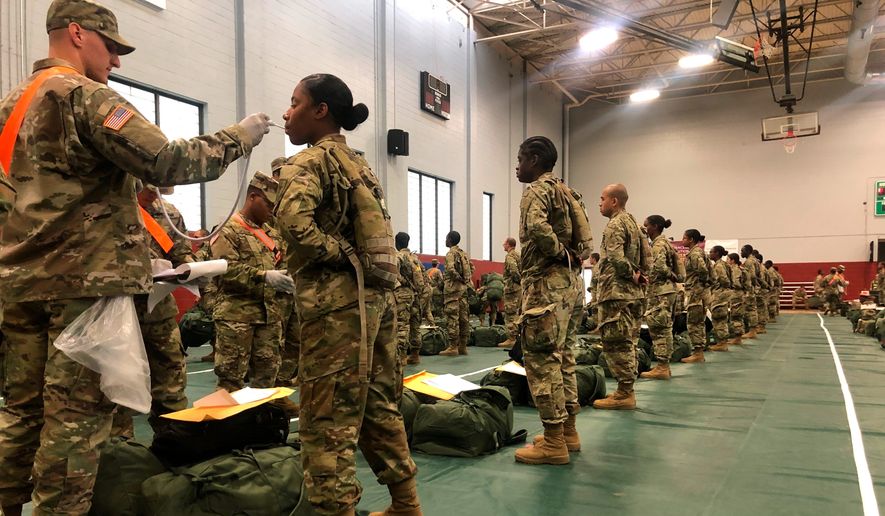The Army inched past its personnel target for the 2020 fiscal year by convincing more soldiers to remain in uniform, making up for a dip in initial recruitment figures sparked by the COVID-19 pandemic.
The Army finished up the fiscal year slightly ahead of its 485,000-soldier target. Pentagon officials said they surpassed the goal by “just a few hundred.” Even as all the services struggle with containing the pandemic within their ranks, the grim recruitment predictions from the first weeks of the pandemic didn’t pan out.
This “has been a challenging year for the nation and it has been no different for us,” Maj. Gen. Kevin Vereen, head of U.S. Army Recruiting Command, said Tuesday, who credited the “flexibility, adaptability and the creativity of our recruiters” in a time of deep uncertainty.
The coronavirus pandemic forced the Army to change how it brings in new troops. In March, the service closed the doors at its 1,400 recruiting stations in favor of an online-only effort.
With the private job market looking more unsteady because of COVID-19, some 1,000 soldiers agreed to continue their military service into fiscal year 2021 after the Army offered the option of short-term extensions from 3 to 11 months.
“We had a very good year this year in retention. We want to keep that up,” Gen. James McConville, the Army Chief of Staff, said Tuesday during a press conference at the Pentagon.
“We are in a war for talent.”
While the number of commissioned officers in the military is controlled by Congress, the services have more latitude to work with when it comes to enlisted personnel, said Beth Asch, an economist at the RAND Corporation who focuses on defense personnel issues.
“There is a lot of latitude on how much end strength can be done through retention,” she said. “There is plenty of historical precedent for using increased retention as a way of ensuring they meet end strength.”
The Air Force even stopped recruiting altogether for a time in the 1990s because of downsizing requirements, Ms. Asch said.
COVID-19 caused a change to retention and attrition patterns that planners had not anticipated. More people wanted to stay in the Army, which meant the service needed fewer people to enlist.
“We made a lot of changes in a short period of time,” Maj. Gen. Vereen said.
Army officials are rolling out plans for a campaign to retain promising military personnel and recruit new troops — even if they’re forced to continue operating in a COVID-19 environment in the next year.
“We continue to aggressively improve our five quality of life efforts — housing; health care; child care; spouse employment and” military transfers, Gen. McConville said.
Pentagon officials surveyed the force and said they want to look at balancing the operational tempo of their forces, many of whom report being ground down by multiple deployments. Just in recent months, troops have been called on to bolster the U.S. Middle East force confronting Iran, to aid in U.S. and global pandemic relief, and to assist in coping with the nationwide racial justice protests that hit cities this summer.
“The [operational tempo] is still extremely high even as the number of our forces in combat has come down,” Gen. McConville said.
Over the next two years, the Army will be rolling out new procedures for rotational deployments. The Army is also focusing more attention on increasing the number of minorities and women accepted into the ranks. Nearly half of the Army recruits in FY2020 came from minority groups — slightly up from 45% in the previous two years. More than 18% were women, including a nearly 5% jump in Hispanic female recruits, officials said.
“We are continuing to focus on assessing a diverse force that is representative of the nation we serve,” Gen. Vereen said.
• Mike Glenn can be reached at mglenn@washingtontimes.com.




Please read our comment policy before commenting.